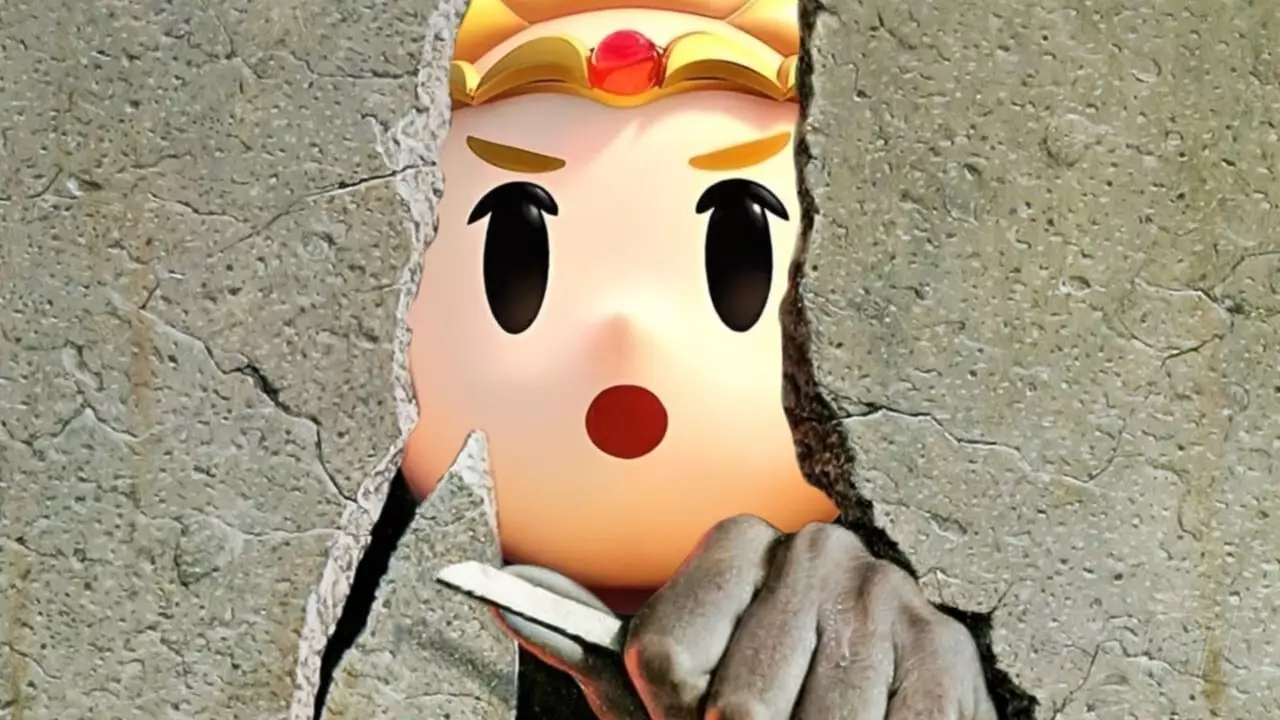The Legend of Zelda series has captivated gamers for decades, featuring rich lore, memorable characters, and intricate puzzles. However, one element that often draws attention—and not in a flattering way—is the apparent incompetence of Hyrule’s prison systems. It’s almost comedic when you think about how easily Link, the chosen hero, escapes from what are supposed to be secure facilities. This article examines the recurring theme of poorly designed prisons across various Zelda games, focusing on the absurdity of their designs and the implications for Hyrule’s monarchy.
In my initial experience with *The Legend of Zelda: Echoes of Wisdom*, I was immediately struck by a glaring issue: Hyrule’s prisons are laughably inadequate. Envision this: Link, despite being captured, discovers an enormous hole situated directly above the bench in his cell. Shouldn’t this be a cause for alarm? The breach practically screams to be climbed through. I found myself chuckling as I summoned objects and executed the simplest escape maneuver, leading Zelda out of her cell with ease. The encounter epitomizes the overarching trend in Zelda titles where prisons seem less like fortified holding areas and more like open invitations for escape.
This escapist approach to prison design is not merely a comical oversight; it raises serious questions about the kingdom’s preparedness to deal with threats, notably the looming figure of the Demon King. If Hyrule is to secure itself against such powerful adversaries, implementing basic security measures—like filling in conspicuous holes—should be a priority. Furthermore, one could argue that a minor adjustment, like locking the adjoining cells, would suffice to thwart even the most cunning of escape plans. Yet, as the games unfold, we see no such preparedness.
Moreover, the lack of fundamental design principles extends beyond mere oversight of holes in cell walls. The *Twilight Princess* offers a prime example where Link—imprisoned due to “crimes against teen angst”—escapes by easily breaking a wooden crate nearby, which reveals another conveniently placed hole. Although binding him with chains was a wise move in theory, one has to question the choice of using flimsy materials. Surely, if you’re dealing with a hero capable of shape-shifting and wielding powerful weapons, it is prudent to employ more robust chains and secure structures.
Yet, the fundamental flaw in Hyrule’s prison design persists. The emphasis on wooden crates and hastily filled gaps overlooks a critical detail: inmates might possess a basic understanding of physical labor. The pervasive thought that the general populace lacks ingenuity in escape tactics is not just naive; it’s a dangerous assumption. This trend continues to proliferate throughout the series, showing how consistent disregard for security permeates Hyrule’s design philosophy.
Contrary to Hyrule’s standard of ineptitude, *A Link Between Worlds* offers a slightly more sophisticated approach with the Thieves’ Hideout. This prison may initially appear to be a more effective facility, yet a closer examination reveals its own set of vulnerabilities. Despite effectively preventing lower-level criminals from escaping easily, the design features a readily accessible switch that opens the door to a neighboring cell. The glaring oversight that a prisoner can interact with crucial mechanisms is a potent reminder of the lack of foresight that permeates Hyrule’s prison system.
This aspect of poor design can lead one to question the intentions behind such choices. Are the creators trying to provide a humorous commentary on the challenges of security, or are they simply writing in a way that doesn’t give due consideration to internal logic? Regardless of the motivation, it certainly detracts from the gravity of the narrative and the perceived threat of the enemies within the series.
As the narrative of *Echoes of Wisdom* unfolds, one can only lament the persistence of such unintended comedic elements—the prisons remain deficient, bordering on slapstick. Although players certainly enjoy the easy escapes, the allegorical implications raise questions about Hyrule’s competency when it comes to securing its kingdom. Players engrossed in adventure games appreciate challenges, and while escaping from a prison may initially seem like a thrill, it ultimately detracts from the seriousness of the endeavor.
Going forward, one can only hope that Hyrule’s monarchy will take a step back and reassess their approach to incarceration. After all, if they intend to hold powerful foes at bay, a little more confidence in their prison designs wouldn’t go amiss. It’s time for Hyrule to elevate its security measures from the realm of fantasy to a level that reflects the epic stakes at play.

